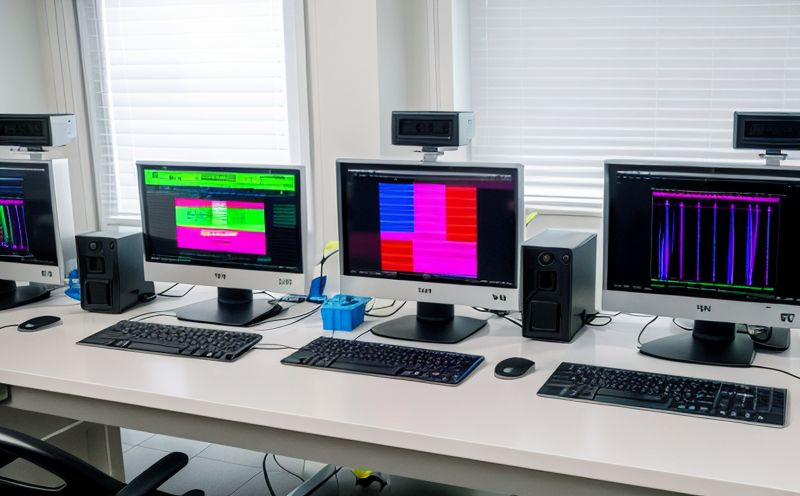USP Validation of Viral Recovery from Surfaces
The USP [1] USP chapter on the validation of viral recovery is a critical standard for ensuring pharmaceutical products are free from contamination. This service focuses specifically on validating the process used to recover viruses from surfaces, which is essential in maintaining product integrity and compliance with regulatory standards.
The USP protocol involves several key steps that must be validated through rigorous testing. The process begins with selecting appropriate surface materials representative of those used in manufacturing environments. Specimen preparation then follows strict guidelines to ensure the accuracy of viral recovery results.
Instrumentation plays a crucial role in this validation process, using advanced technologies such as qPCR (quantitative polymerase chain reaction), ELISA (enzyme-linked immunosorbent assay), and other relevant methods for quantifying virus concentrations. The testing procedure is designed to simulate real-world conditions under which the product might come into contact with contaminants.
Accurate reporting of results is paramount, as it ensures that any detected presence or absence of viruses can be accurately communicated back to stakeholders involved in production processes. Compliance officers and quality managers rely heavily on these reports when making decisions about process improvements or corrective actions needed within their facilities.
The importance of this validation cannot be overstated; improperly validated recovery methods could lead to contaminated products reaching the market, posing significant risks both to public health and corporate reputation. By adhering strictly to USP guidelines during validation processes, manufacturers can mitigate these risks while maintaining high standards of quality assurance.
In summary, our service specializes in providing comprehensive support for validating viral recovery methods according to USP . We offer expert guidance throughout the entire process, ensuring that all necessary steps are followed correctly. This includes selecting appropriate surfaces, preparing specimens properly, employing suitable instrumentation, and generating accurate reports based on the findings.
Our team of experienced professionals understands the nuances involved in conducting these tests according to strict regulatory requirements. With our expertise, you can rest assured knowing your viral recovery validation will meet or exceed expectations set forth by USP .
Applied Standards
The USP [1] provides clear guidelines for validating methods used to recover viruses from surfaces. This includes defining acceptable limits of detection, establishing recovery factors, and ensuring reproducibility across different batches or samples.
- Acceptable Limits of Detection: According to the USP , the limit of detection should be within ±0.5 log10 units compared to a standard curve.
- Recovery Factors: The recovery factor must fall between 80% and 120%, indicating that at least 80% but no more than 120% of the expected amount of virus needs to be recovered.
- Reproducibility: To ensure consistent results, tests should yield similar recoveries when repeated under identical conditions.
These standards are crucial in maintaining accuracy and reliability throughout the entire validation process. Adhering strictly to these criteria helps guarantee that any potential contamination risks are identified early enough to take corrective actions if necessary.
In addition to USP , other relevant international standards such as ISO 18184:2019 on antimicrobial resistance testing may also be applicable depending on the specific application. These additional references help provide broader context around what constitutes best practices in viral detection and quantification.
Customer Impact and Satisfaction
- Enhanced Product Safety: By validating viral recovery methods according to USP , we ensure that any potential contamination risks are minimized. This leads to safer products for end-users, thereby enhancing customer satisfaction.
- Improved Regulatory Compliance: Adherence to strict regulatory requirements helps maintain compliance with global standards like those set by the FDA or WHO. Meeting these expectations fosters trust among regulatory bodies and healthcare providers.
- Informed Decision-Making: Accurate validation reports provide valuable insights into areas where improvements are needed within manufacturing processes. This enables informed decision-making that can lead to continuous improvement efforts.
- Cost Efficiency: Early identification of issues through thorough validation saves time and money by avoiding costly recalls or rework later in the product lifecycle.
Our commitment to delivering high-quality services based on rigorous scientific methods ensures long-term partnerships built on trust, reliability, and mutual success. We work closely with our clients to understand their unique needs and develop tailored solutions that meet both current regulatory expectations as well as future trends in pharmaceutical quality assurance.
International Acceptance and Recognition
- Global Consistency: Compliance with USP ensures consistency across borders, making it easier for manufacturers to export their products internationally without facing additional hurdles due to differing local regulations.
- Cross-Sector Collaboration: Our expertise in this area allows us to collaborate effectively not only within the pharmaceutical industry but also with related sectors such as biotechnology and medical device manufacturing where similar challenges exist regarding viral contamination.
- Standard Setting Role: By continuously pushing boundaries in terms of what constitutes best practice, we contribute to setting new standards that other laboratories strive towards achieving. This proactive approach helps maintain leadership positions within our industry.
The global recognition of USP further emphasizes its importance as a benchmark for quality assurance practices worldwide. As more countries adopt similar guidelines based on this chapter, it becomes increasingly valuable to have a partner who specializes in providing these services.





